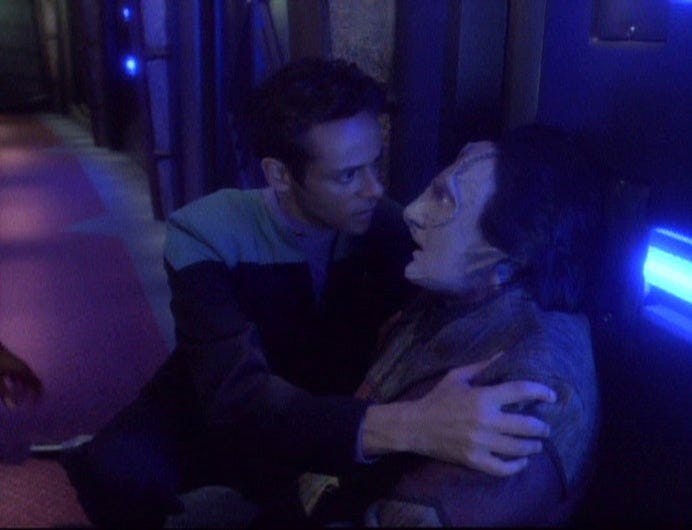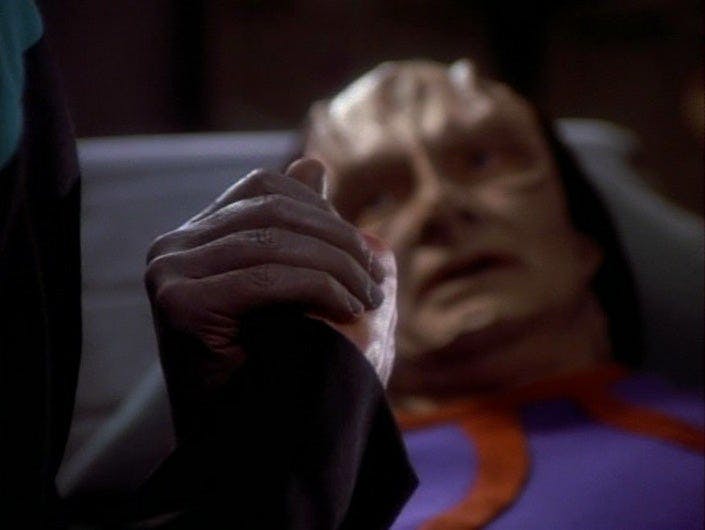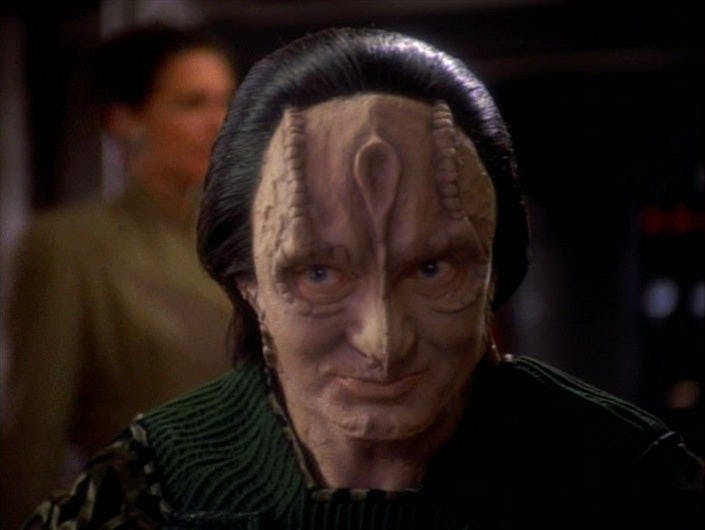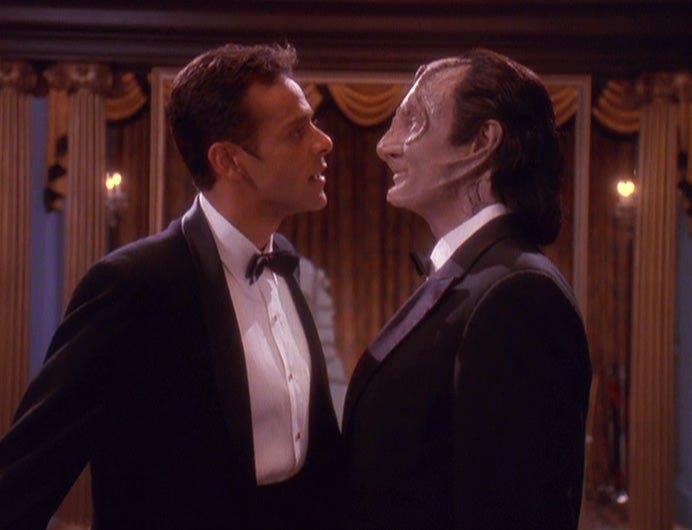Published Apr 4, 2023
My (Second) First Contact: The Discovery of Garak and Oneself
One fan details the power of identifying with Deep Space 9's 'simple tailor' and finding their path forward.

StarTrek.com / Rob DeHart
My first contact with Star Trek was when I was four years old, when “Encounter at Farpoint” aired and my dad took a great deal of joy in introducing me to what was to become a lifelong obsession. While I was obsessed — going to conventions, buying books and merchandise, watching all the episodes — I was just consuming the shows. I wasn’t really thinking about them.
In college, after Star Trek: Deep Space Nine had entered syndication, I finally started paying attention. I was starting to find myself after growing up in a very fundamentalist community that I’d struggled to fit in with; I thought something familiar would help. I knew these episodes, knew these characters, knew how things would go, so I could put Star Trek on and zone out.

StarTrek.com
It turned out I didn’t know the characters as well as I thought I did, just as much as I didn’t yet know myself. I had never met a gay person until I was 15, working my first job. I was struggling with the confusion that came from liking both men and women, not knowing if that was an actual thing people could do or if my upbringing was right and I was being compromised by the sinful world around me. The queer people I knew seemed great, unlike what I’d been taught. As I watched Garak’s hands land on Julian Bashir’s shoulders in the replimat, I started to realize what I was seeing in this scene. Here, outside of my very sheltered bubble, I could finally see queerness on-screen. Even more, I could see it in something that was a familiar comfort, which made it so much easier to accept. Having it portrayed in one of the few genres I watched — sci-fi — made being queer feel more real and less of a weird outlier or worse, things that my church had called it. Furthermore, the Starfleet officer in the situation didn’t pull away or reject Garak. If a good Starfleet officer was not only tolerant of someone being gay but also seemingly interested, then it couldn’t be the evil that many around me were convinced it was.
As more and more of Garak’s story unfolded, slowly I realized how much of myself I was seeing on-screen. I probably shouldn’t admit that I was finding resonance and representation in a murdering spy who attempted genocide and blew up at least two things, but whoops, now it’s there in text. Thankfully, it wasn’t the violent sides of the totally-a-tailor I recognized. I promise.

StarTrek.com
Garak’s exile, his loss of his community and family, was what stood before me if I started to live my life as my bisexual self. My church wouldn’t accept me, my fellow missionary kids wouldn’t, and I was sure a significant part of my family wouldn’t either. Yet here he was, living his life authentically even in the midst of everything else. His father utterly rejected him, and he kept moving forward. He despaired of ever having a home again, but he kept fighting for what his home could be.
I wasn’t that strong. I hid my thoughts and myself for a while after that realization because I felt I had enough on my plate — in college, my health ditched me and one of my two best friends died — but it ate at me. I wanted to be as confident as Garak, and to be as secure as he clearly had to be. But there’s an illusion of comfort and safety in hiding who you are to keep people around, and if there’s anything that defines humanity, it’s the desire for community.

StarTrek.com
I watched Deep Space Nine over and over again, but my focus was always heaviest on Garak. I can’t count how many times I’ve read A Stitch in Time (the Star Trek book written by DS9 actor Andrew Robinson about his character Garak); originally, I bought it because I auto-bought every Deep Space Nine release, but it became my favorite due to how much the characters resonated with me.
Years later, I connected with a woman over Star Trek and Mass Effect, and fell head-over-heels for her. The relationship didn’t last, but it encouraged me to finally take that stand and come out to everyone. I was right; a significant part of my family didn’t accept it, and that was the last time I heard from a few “friends.” But I’d done it. I finally started to accept who I am.

StarTrek.com
More recently, I hit another part of my personal journey of self-discovery. I heard the term “gender euphoria” come up in a Star Trek fan group, Sid City Social Club, and from there landed on the piece of the puzzle that had never quite fit before. I’m trans. There’s a character in A Stitch in Time, who defies typical Cardassian gender roles, who was broken, and who managed to rebuild himself and find his way forward. His name was Kelas Parmak. And now my name is Kelas, too.
There’s always more to come in the journey of life, but my second first contact with Star Trek helped me find myself and my path forward.
Kelas Lloyd (they/them) is a trans & disabled author and artist currently residing in Austin, Texas alongside two cats. You can find them on twitter @Tadandader, or on their site kelaslloyd.com
Stay tuned to StarTrek.com for more details! And be sure to follow @StarTrek on Facebook, Twitter, and Instagram.

